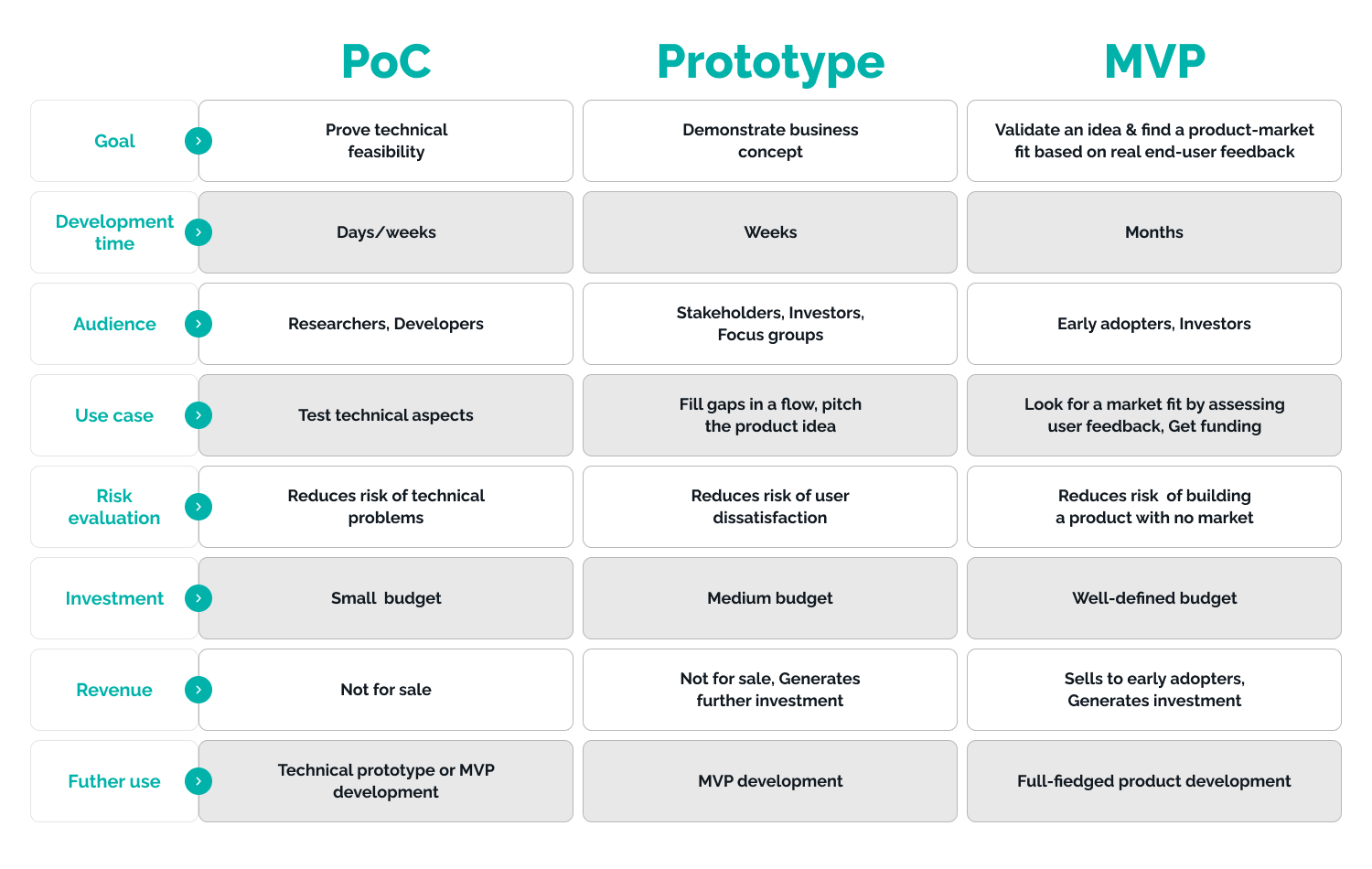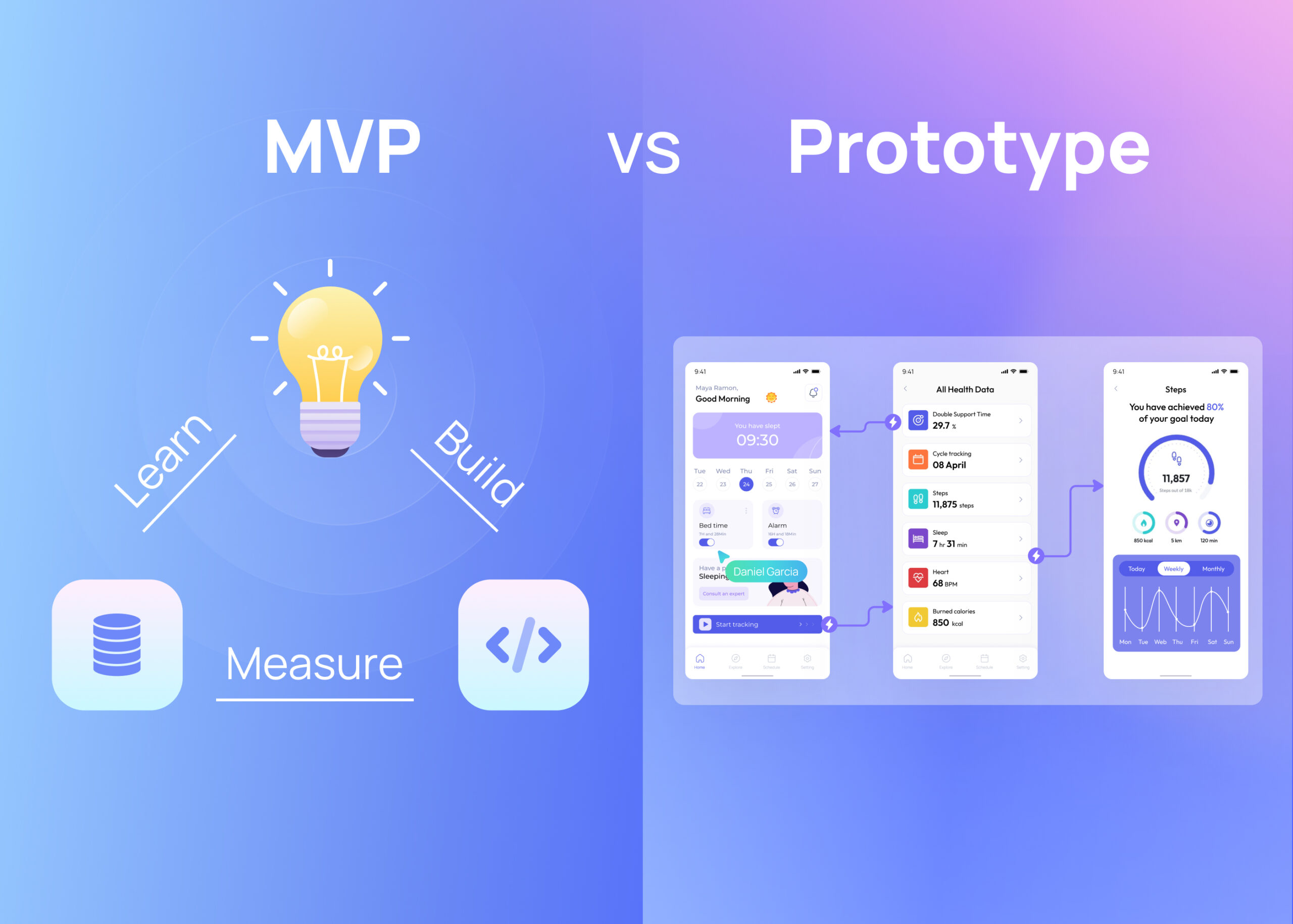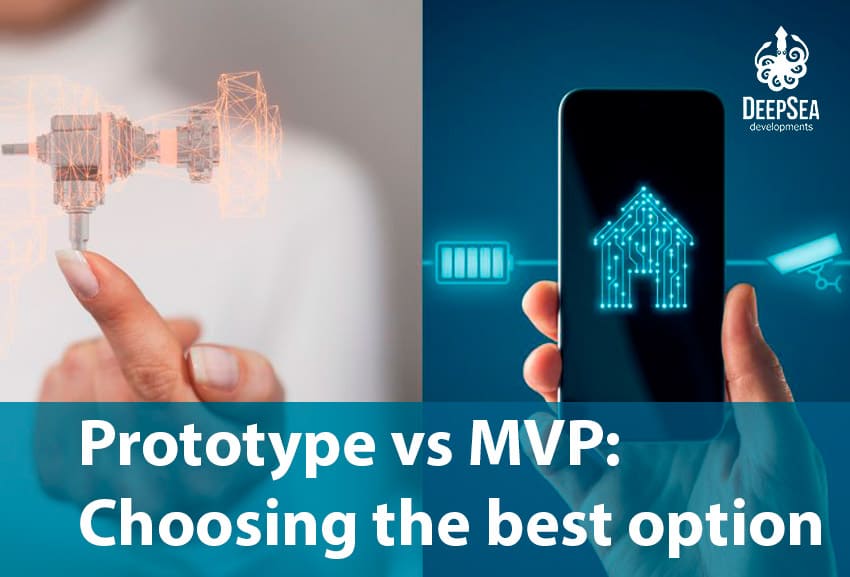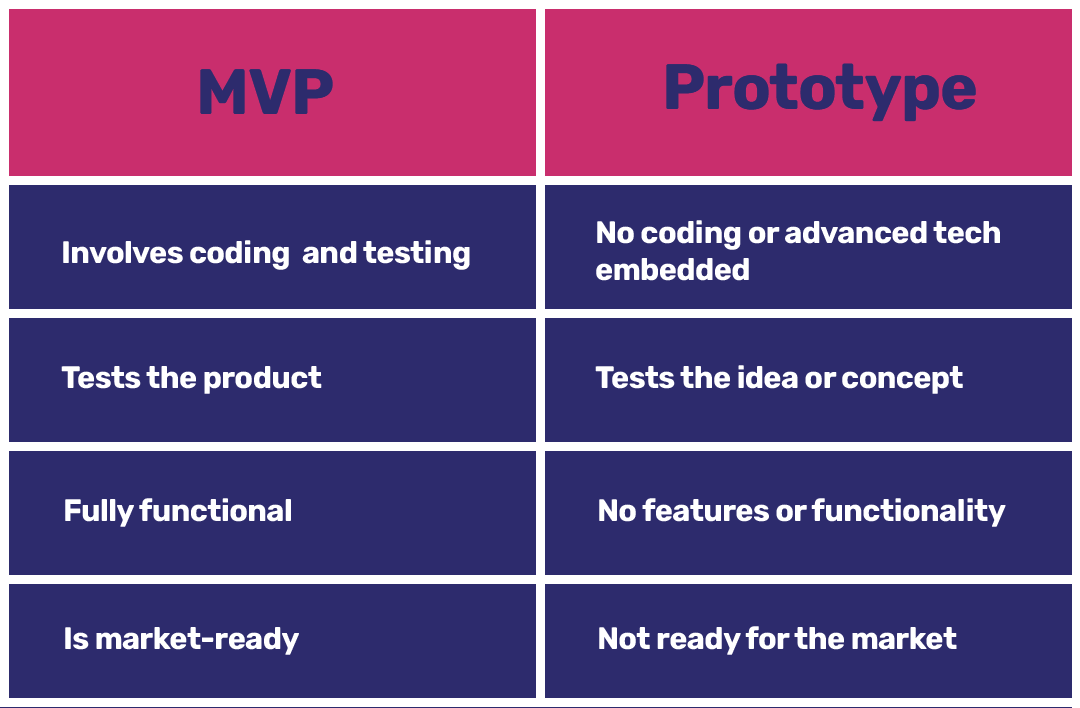Recommendation Tips About Is MVP A Prototype

Prototype Vs MVP What Is The Difference?
Unraveling the Mystery
Okay, let's get something straight right off the bat. The tech world loves its acronyms, right? MVP, prototype… they sound important, maybe even a little intimidating. But are they the same thing? Is an MVP just a fancy prototype with a cooler name? The short answer is: not exactly. Think of them as cousins, not twins.
1. What's the Deal with Prototypes?
Imagine you're building a house. A prototype would be like a scaled-down model, a blueprint that shows the basic structure and layout. In the software world, it's a preliminary version of your product that showcases the core functionality. You might use it to test a specific feature, gather user feedback, or demonstrate your idea to investors. Think of it as a dress rehearsal before the big show.
Prototypes can range from simple sketches on paper to interactive mockups built with tools like Figma or Adobe XD. The level of fidelity depends on what you're trying to learn. Are you testing the user interface? Are you validating a specific workflow? A prototype helps you answer these questions without investing the time and resources to build a fully functional product.
The main goal of a prototype is learning. It's about discovering what works, what doesn't, and what needs to be tweaked before you commit to writing actual code. It's a safety net, a chance to experiment and iterate without breaking the bank. Think of it as a "fail fast, learn faster" approach to product development.
Essentially, it is a simulation of (some) aspects of your final product with the goal of exploring your ideas. You can use it to test specific features with potential customers, to test workflows, or to show off to investors.
2. MVP
Now, let's talk about MVPs. MVP stands for Minimum Viable Product. It's a version of your product with just enough features to attract early-adopter customers and validate your product idea. Unlike a prototype, which is often disposable, an MVP is a real, working product that users can actually use. It's not perfect, and it probably doesn't have all the bells and whistles you envision, but it's functional and solves a specific problem for your target audience.
The key word here is "viable." It's not just about having the bare minimum features; it's about having the right minimum features. You need to deliver enough value to entice users to try your product and give you feedback. The MVP is about validating your assumptions and learning what resonates with your audience. It's a continuous loop of building, measuring, and learning.
Think of it like this: you're opening a new pizza restaurant. A prototype would be a sample slice you give out to people on the street to get their opinion. An MVP would be offering a limited menu of your best-selling pizzas for delivery. You're not offering every possible topping and crust combination, but you're providing a real product that people can actually order and enjoy (or not!). Their feedback helps you refine your menu and improve your service.
An MVP is actually built. It's deployable, and users can use it. This distinguishes it from a prototype, which is more of a simulation. An MVP is, in effect, a functional first release of your product. This early release lets you test your product hypothesis in a real-world setting.
3. So, What's the Difference? (Besides the Obvious)
Okay, so we've established that prototypes are for exploration and MVPs are for validation. But let's dive a little deeper into the key differences.
Think about the purpose. A prototype's purpose is learning. An MVP's purpose is to validate the business model behind the product. Prototypes answer questions like: "Can this be built?", "Is this usable?", "Is this fun?". MVPs answer questions like: "Will people use this?", "Will they pay for it?", "Will they tell their friends?".
Then there's the audience. Prototypes are often shown to internal stakeholders, potential investors, or a small group of beta testers. MVPs are released to a broader audience of early adopters who are willing to tolerate some bugs and missing features in exchange for being among the first to use a new product. These early adopters are crucial for providing valuable feedback that shapes the future development of your product.
The lifecycle is also different. Prototypes are typically discarded once they've served their purpose. MVPs, on the other hand, are the foundation upon which you build your product. They evolve and grow over time as you add new features and improve existing ones based on user feedback.
The underlying technology is also important to think about. Prototypes are often built using low-fidelity tools that don't require extensive coding. MVPs, however, are built using production-ready technologies that can handle real users and data. In practice, this may mean a rewrite to bring the product to market.
4. Can an MVP Be a Prototype? (Mind. Blown.)
Here's where things get a little meta. Technically, yes, an MVP can be a prototype, but only in the sense that everything is a prototype until the business finds product-market fit. The term to understand here is product-market fit. In other words, there is an actual product people will pay for and enjoy. If you never reach product-market fit, your MVP may remain a prototype.
If your MVP is your prototype, it's often a sign that you've built something too complex, too early. Remember, the "M" in MVP stands for "minimum." You want to build the simplest possible version of your product that still delivers value. Don't get bogged down in building features that you're not sure your users will actually want.
However, there can be situations where a very early stage MVP functions as a prototype for a larger vision. In this context, the "MVP" is truly experimental and focused on gathering extremely early validation before any major investment. It's a riskier approach, but can yield valuable data if executed well.
Think of it like launching a lemonade stand. An MVP would be setting up a basic stand with lemonade and cups. If nobody buys your lemonade, you could consider that your prototype and shut down. That is how every business should consider its first product. A prototype may be a throwaway artifact, but an MVP should be treated as such to save money and resources in the long run.
5. Making the Right Choice for Your Project
Ultimately, the decision of whether to build a prototype or an MVP depends on your specific goals and resources. If you're simply trying to validate a core concept or test a specific feature, a prototype is likely the way to go. It's faster, cheaper, and allows you to iterate quickly based on feedback. It has a very simple and straightforward purpose.
On the other hand, if you're ready to launch a real product and start acquiring customers, an MVP is the better option. It requires more investment, but it also provides a more realistic test of your product's market viability. A prototype is used to test a single aspect of a product. An MVP is used to test a business.
No matter which path you choose, remember to focus on learning and iterating. The most successful products are those that are constantly evolving based on user feedback and market trends. Don't be afraid to experiment, to fail, and to learn from your mistakes. That's how you build a product that truly solves a problem and delivers value to your users.
Don't overthink it. At the end of the day, both prototypes and MVPs are tools to help you build better products. Choose the tool that best suits your needs and get to work! Both prototype and MVP are important, even if the prototype is simply an idea in your head.

Frequently Asked Questions (FAQ)
6. What comes first, the prototype or the MVP?
Generally, the prototype comes first. It's used to test the waters and refine the concept before investing in building a full MVP.
7. Can I skip the prototype and go straight to the MVP?
You can, but it's often risky. Skipping the prototype means you're making more assumptions and potentially building a product that doesn't meet user needs.
8. How much should I invest in a prototype?
That depends on the complexity of your product and the level of fidelity you need. The goal is to learn as much as possible with the least amount of investment.

Prototype Vs MVP What's The Difference? Visily

Proof Of Concept Vs Prototype MVP Know The Differences Broscorp

